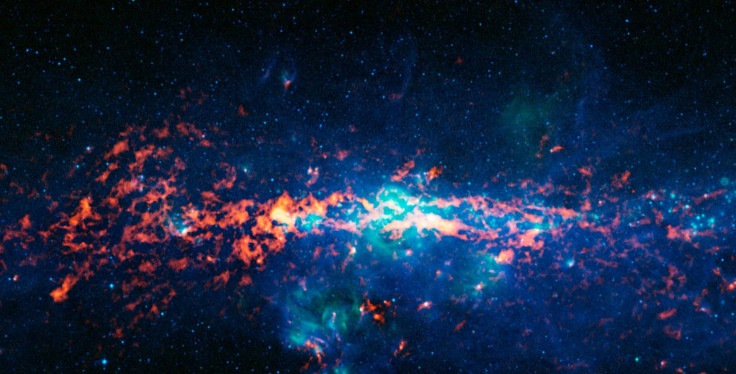Space Alcohol Formation Explained By 'Quantum Tunneling'

Alcohol such as ethanol and methanol shouldn't exist in space, but it does, and in vast quantities. But how does this happen? A new study suggests alcohol formation in space is the result of "quantum tunneling."
Alcohols are complex compounds that need a chemical reaction to be created. The extreme cold of space, with temperatures as low as -210 to -270 degrees Celsius, limits chemical reactions, because low temperatures don't provide enough energy to break and reform a particle's chemical bonds. However, new research led by chemist Dwayne Heard from the University of Leeds, points to the process known as quantum tunneling, which acts as nature's "workaround" to provide the energy needed for a chemical reaction. The study was published in the journal Nature Chemistry.
According to the study, quantum tunneling, a process that can be explained only by quantum mechanics, occurs when a particle tunnels through a barrier, effectively achieving what Newtonian physics would say is impossible. But on a quantum level, the location of a particle is a only a probability, as opposed to being fixed in one place. Since it acts like a wave in motion, according to quantum theory, there is a probability, albeit a small one, that a particle's wave function can allow it to tunnel through a barrier. However, the wave function must be continuous both before it enters the barrier and afterward for it to pass through the barrier.
To test this hypothesis, the chemists in the study performed a series of experiments to determine if a methanol mixture, and not dust grains, play a role in the creation of the methoxy radical, a highly reactive compound discovered in space in 2012. Previously, it was believed that complex molecules attached themselves to dust grains, which would enable the chemical reaction that produces the methoxy radical in space. But the study showed the methoxy radical is not created this way.
To prove this, the team bombarded a methanol mixture with radiation, mimicking the temperature and conditions of space, but it was unable to produce the methoxy radical, the release noted. When the chemists could not explain how chemicals react in space, they turned to space itself for the answer.
In cold temperatures, similar to those of space, the methoxy radical is created using methanol and hydroxyl radical, an oxidizing agent. The cold of space not only allows for the creation of the methoxy radical but also allows it to occur at a much higher rate. The creation of the methoxy radical occurs at a rate 50 times faster in deep-space cold temperatures, in fact, than at room temperature. The chemists believe there is a new agent, similar to the previous dust grain theory, formed at the beginning of the reaction. "We suggest that an 'intermediary product' forms in the first stage of the reaction, which can only survive long enough for quantum tunneling to occur at extremely cold temperatures," Heard said.
The increased reaction rate increases the number of reactions, which in turn helps increase the probability of quantum tunneling. The chemists will test other alcohols in this experimental setting to determine if the increased rate of reaction is not isolated to just methanol under extremely cold temperatures. If other alcohols react similarly, it could indicate that space alcohol is formed more often than previously believed. In 2001, astronomers discovered billions of liters of alcohol in the Sagittarius B2 cloud, for example.
© Copyright IBTimes 2024. All rights reserved.












